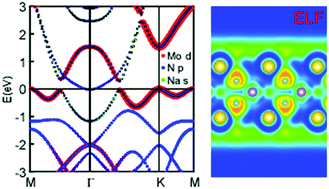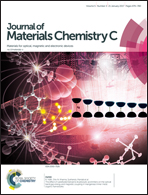Surface functionalization of molybdenum dinitride nanosheets by halogen and alkali atoms: a first-principles study
Abstract
Utilizing first-principles calculations, we have investigated the structures and properties of fully functionalized MoN2 sheets, i.e. MoN2X2 ones with X = F, Cl, Br, Li, Na, K. It is found that the surface functionalization could stabilize the trigonal prismatic H-type structures in MoN2X2 sheets, which possess robust energetic, dynamic and thermal stabilities for X = F, Cl, Li, Na, and K cases. Compared to the pristine MoN2 sheet, the functionalized systems exhibit diverse electronic properties depending on the decorated atoms. The MoN2F2 and MoN2Cl2 sheets are semiconductors with indirect band gaps, while the alkali functionalized ones can be semiconducting/semimetallic/metallic in the Li-/Na-/K-decorated systems. More interestingly, the positively charged alkali metal surfaces attract nearly free electron (NFE) states near the Fermi level, which are even partially occupied in these alkali-decorated systems. The delocalized electrons in MoN2Na2 and MoN2K2 sheets form an intrinsic two-dimensional electron gas in the free space (2DEG-FS) state, which can be used for the electron transport without nuclear scattering. Our study demonstrates that the surface functionalization on MoN2 sheets brings robust structural stabilities and diverse electronic properties, which enable potential applications in nano-devices and nano-electronics.



 Please wait while we load your content...
Please wait while we load your content...